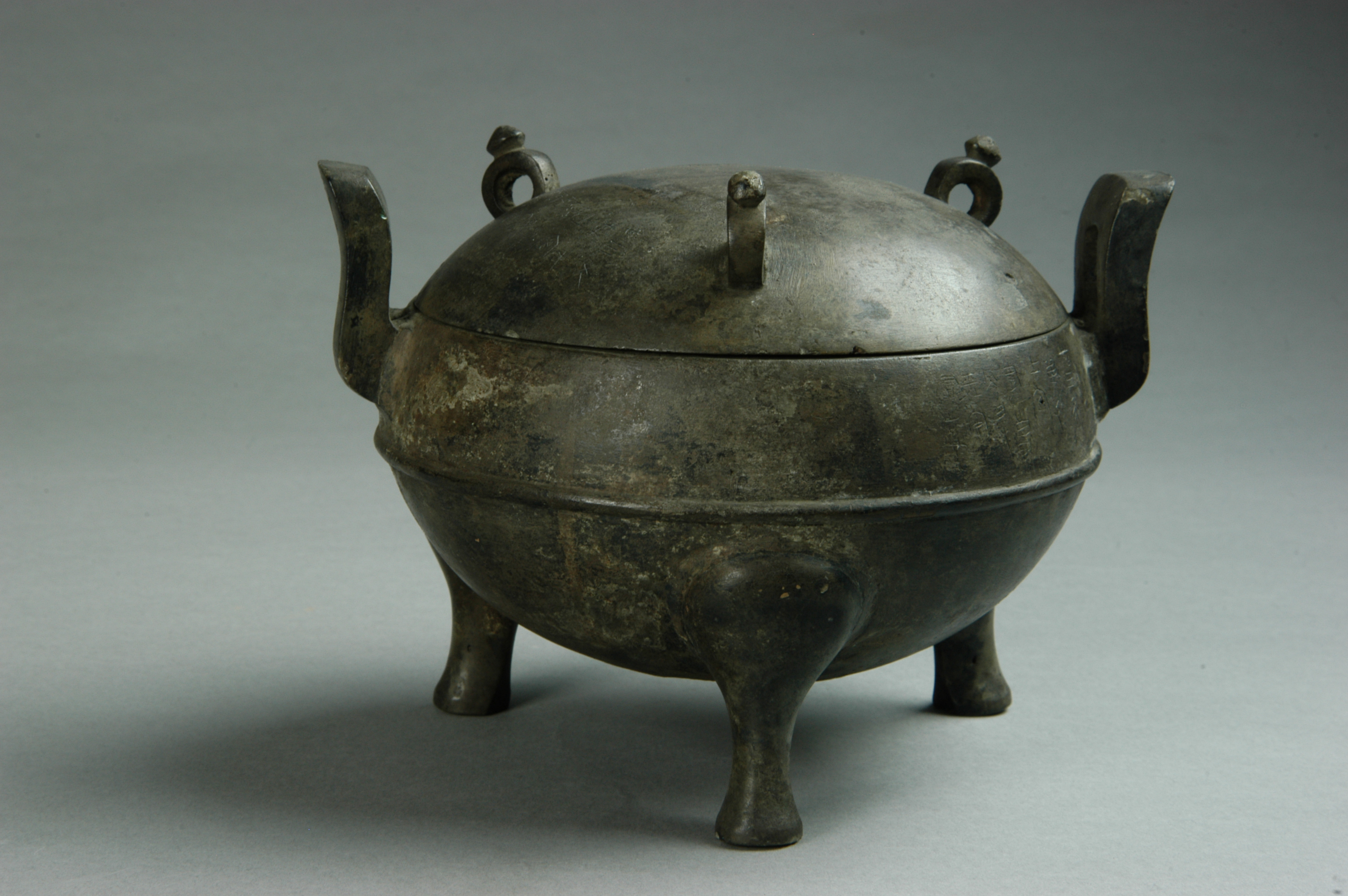Date: Qin Dynasty (221-206 BC)
Provenance: Unearthed in Guanzhuang village, Biyang county, Zhumadian, Henan province, 1978
Measurements: Height: 16 cm, Body diameter: 57 cm, Mouth diameter: 12.5 cm
This bronze tripod ding features a contracted mouth, a bulging body, three short feet, and a pair of slightly outward-cast upright ears. Adorning the body is a protruding band with a string pattern, while the lid boasts three lugs. Identical inscriptions are present on both the exterior of the lid and the upper part of the body.
In terms of its origin, multiple hypotheses have been put forth without a definitive answer. It could be a product of the State of Qin, the State of Wei (in Shanxi), or the State of Wei (in Henan).
In terms of the date of the vessel, according to the excavation report, the artifact's chronology in the inscription is akin to the chronological method of the Qin Dynasty. This suggests that the cauldron dates to the late Qin Dynasty, potentially during the reign of Emperor Qinshihuang.

